Prenatal & Postpartum Home Exercises
4/27/2023
Physical therapy is beneficial in all stages of pregnancy and postpartum. Many countries, including France and the United Kingdom, include pelvic floor physical therapy services as part of the standard plan of care for pre and postnatal clients. Patients are typically seen by their OBGYN for a postpartum check, then referred to a physical therapist to address common concerns, including core, hip, and pelvic floor weakness, urinary incontinence, postural deficits, and diastasis recti.
Common problems that can occur during or following pregnancy include:
- SI and tailbone pain
- Low back pain
- Pelvic or pubic symphysis pain
- Round ligament pain
- Hip pain
- Core muscle weakness
- Hip weakness
- Pelvic floor weakness or tightness
- Urinary incontinence
- Diastasis Recti
- Postural changes
The human body goes through immense changes, especially around 40 weeks of pregnancy:
The uterus expands 500 times its pre-pregnancy size, growing from a pear to a watermelon by the end of the third trimester.
The blood volume increases by 40-50% to supply oxygen throughout the mother and baby’s body.
The mother’s heart, feet, and abdomen all increase in size during pregnancy.
As the abdomen grows and expands, a separation occurs in the connective tissue that joins the abdominal muscles. Although this is normal during pregnancy, it can cause problems postpartum (diastasis recti). The hormone relaxin is responsible for the flexibility in the pelvis that is needed for labor and delivery. Relaxin also increases the flexibility of ligaments throughout the body and the risk of injury to the joints. This can result in back, SI joint, and pelvic pain without appropriate muscle support.
Staying active while pregnant assists in recovery after pregnancy and can limit the severity of postpartum concerns. Physical therapy can help patients return to pre-pregnancy activity, including running, jumping, or any other fitness program. It is highly beneficial to stay active throughout pregnancy, although that activity level can and likely will vary by trimester.
Physical activity can also help you stay within a healthy weight gain range, which benefits the mother and the baby, limits the risk of gestational diabetes, and prepares you and your muscles for labor and delivery.
We have provided an exercise program below that is safe to do in any trimester or postpartum once cleared for activity by your OBGYN. For a more individualized plan that meets your needs at any stage of your pregnancy or postpartum journey, visit us at Tri Physical Therapy!
Physical Therapy and Motherhood
Pilates-Based Pelvic Floor Therapy
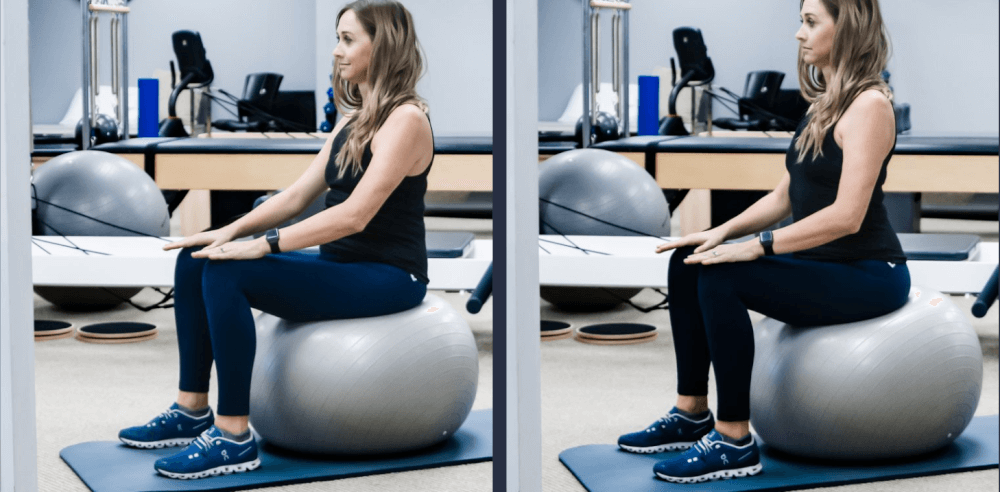
Pelvic Tilts On Ball
Benefits: Stretches the lower back, tones the abdominals, and strengthens the pelvic floor.
Start by sitting on an exercise ball with feet slightly wider than hip-width apart. Sit next to a wall for safety. Inhale as you raise your arms overhead with hands clasped together. On the exhale, tilt your pelvis backward, imagining that you have a tail and are tucking it between your legs. On the inhale, tilt your pelvis forward and arch your low back.
Perform: 10 tilts in each direction, 1-2 times per day
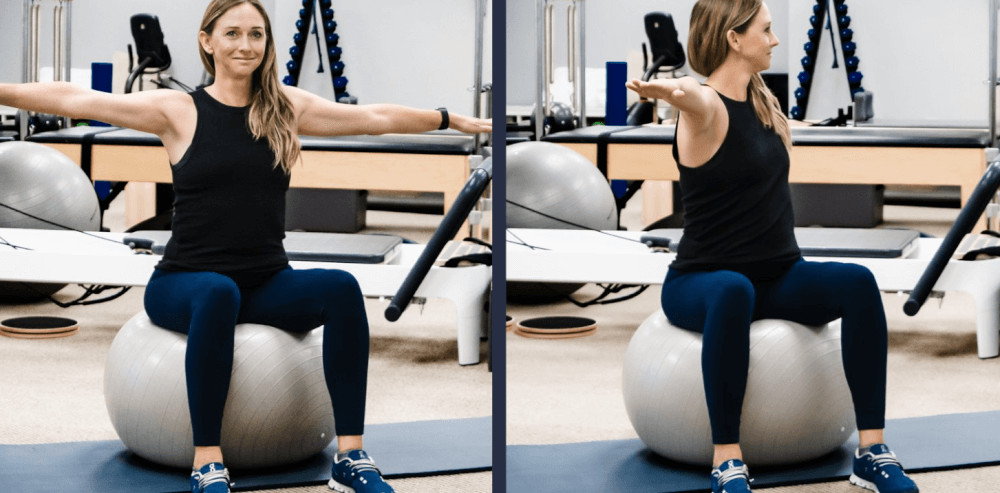
Spinal Twist On Ball
Benefits: Loosens the mid back, stabilizes the pelvis, and strengthens the abdominals.
Start by sitting on an exercise ball with feet slightly wider than hip-width apart. Sit next to a wall for safety in case you lose your balance. Raise arms to the sides to make a “T”. On the inhale, rotate the upper body/chest to the right. On the exhale, return to center. On the next inhale, rotate the upper body/chest to the left.
Perform: 10 in each direction, 1-2 times per day
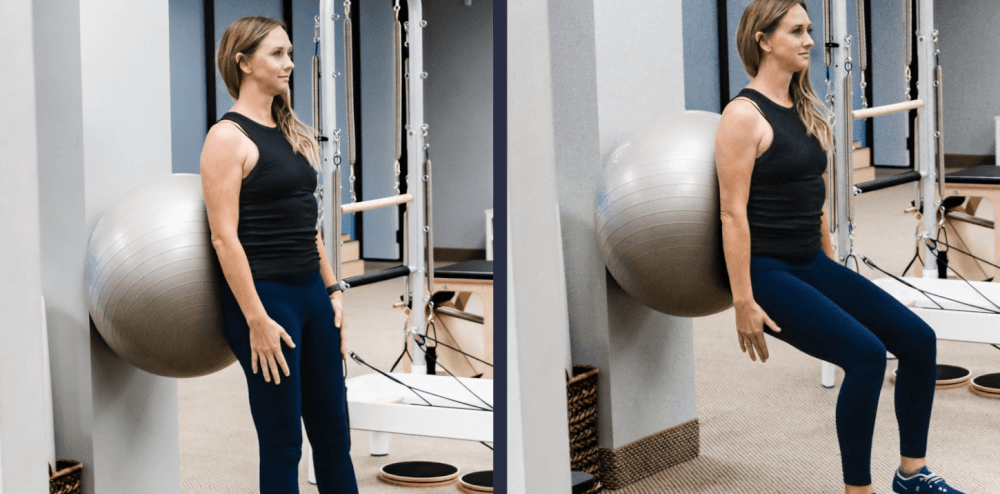
Squats Against Wall
Benefits: Strengthens the leg muscles, strengthens the pelvic floor, and strengthens the inner thighs to stabilize the pelvis.
Place an exercise ball against the wall and lean your lower back against the ball. Place feet hip-width apart and walk feet slightly forward. Inhale and lower hips into thighs are parallel to the ground. Exhale as you return to standing. Think about tightening the buttocks, core, and pelvic floor as you return to standing.
Perform: 2 sets of 10 repetitions, 1 time per day
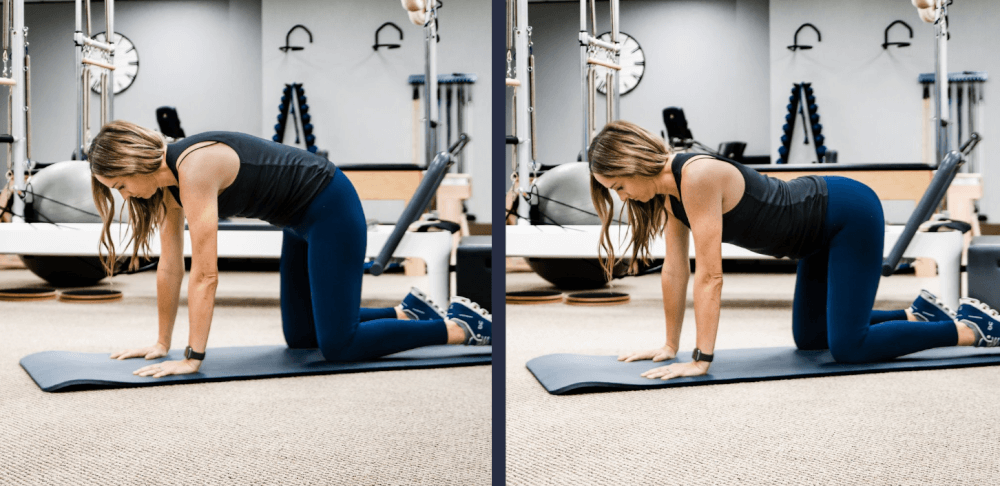
Hands and Knees Pelvic Tilts
Benefits: Stretches the low back, strengthens the lower abdominals, strengthens the pelvic floor, and improves mobility in the pelvis.
Start in a quadruped (hands and knees) position with shoulders directly over hands and hips directly over knees. On the inhale, arch low back as you tilt the pelvis forward. On the exhale, round the low back as you tilt the pelvis backward.
Perform: 2 sets of 10 repetitions, 1 time per day
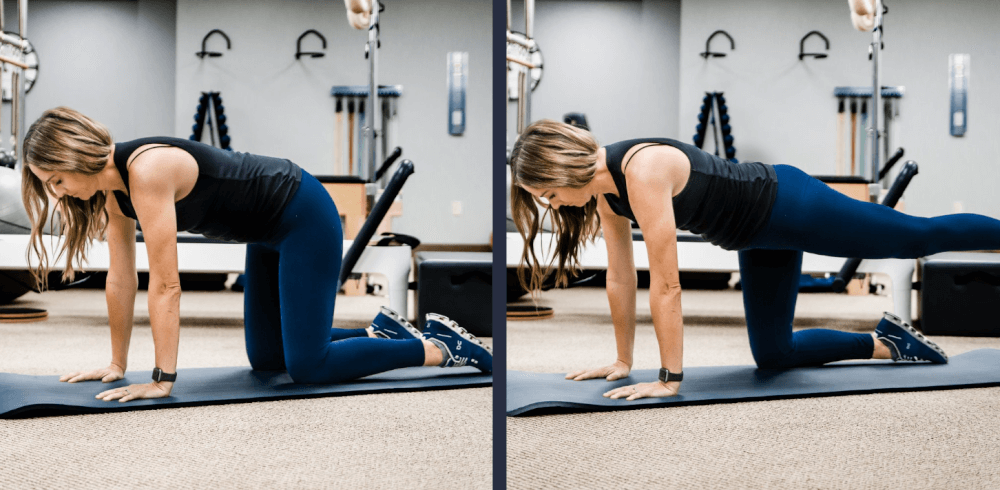
Hands and Knees Leg Lifts
Benefits: Strengthens the gluteal muscle groups (buttocks), strengthens the abdominal and stabilizes the shoulders and shoulder blades.
Start in a quadruped (hands and knees) position with shoulders directly over the hands and hips directly over the knees. On the inhale, extend one leg straight back. On the exhale, lift the leg toward the ceiling but don’t arch your lower back. On the inhale, lower the leg back in line with the hips. On the exhale, lift the leg back towards the ceiling.
Perform: 2 sets of 5 repetitions per leg, 1 time per day
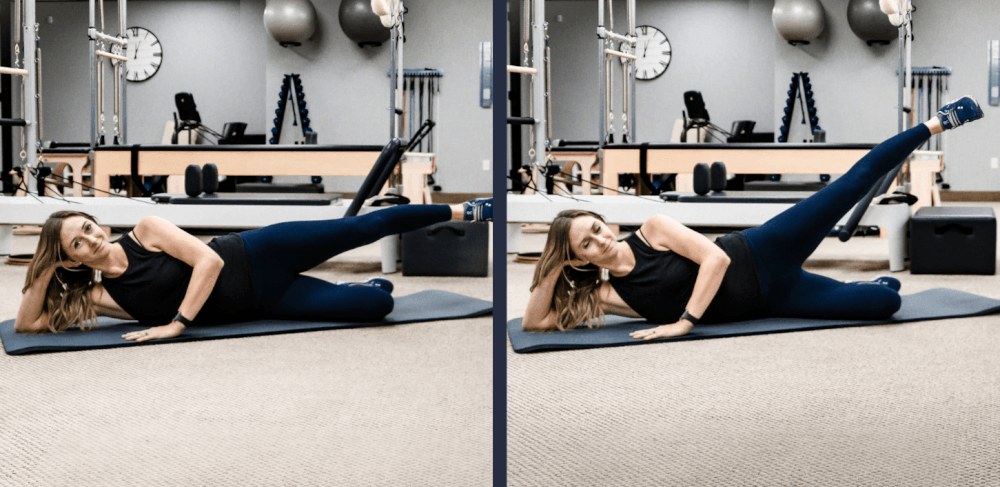
Side Lying Leg Lifts
Benefits: Strengthens the outside of the hips and helps to stabilize the pelvis.
Lie on your side with your top leg straight and in line with your upper body. Support your head with the bottom hand. Take an inhale. On the exhale, lift the top leg up towards the ceiling without arching your lower back. Inhale and lower the leg back down.
Perform: 2 sets of 10 repetitions per leg, 1 time per day
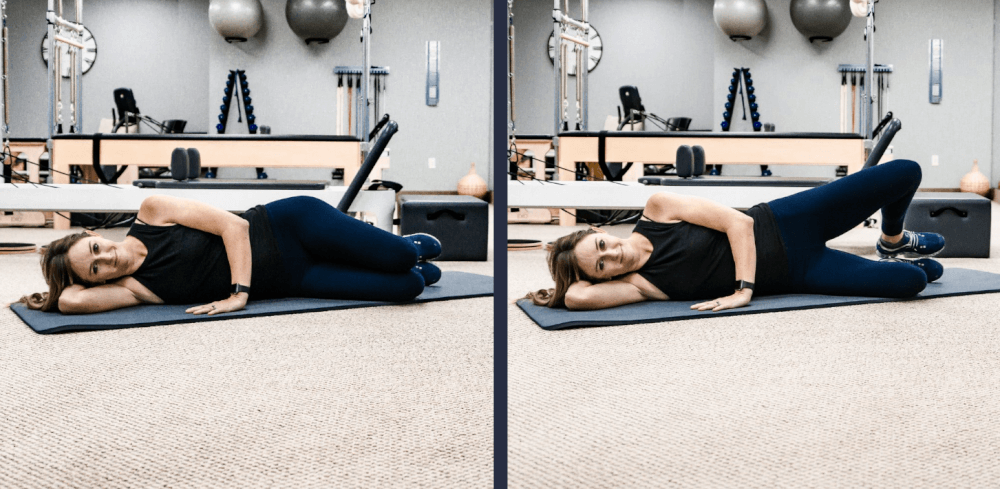
Clams
Benefits: Strengthen the gluteal muscles (buttocks and outside hip) and hip rotators. Strengthens the pelvic floor.
Lie on your side with knees bent to 90 degrees and your top leg stacked on the bottom leg. Take an inhale. On the exhale, raise the top leg up while keeping the feet together. On the inhale, lower the leg back down.
Perform: 2 sets of 10 repetitions per leg, 1 time per day

Forward Kneeling Stretch
Benefits: Opens up the pelvic outlet. Stretches the pelvic floor muscles. Stretches the lower back.
Sit back on heels with knees apart and feet together. Take an inhale. On the exhale, lean forward into the ball and gently roll forward. Take 5 slow inhales and exhales before returning to the sitting position.
Perform: 1 stretch, 3 times daily